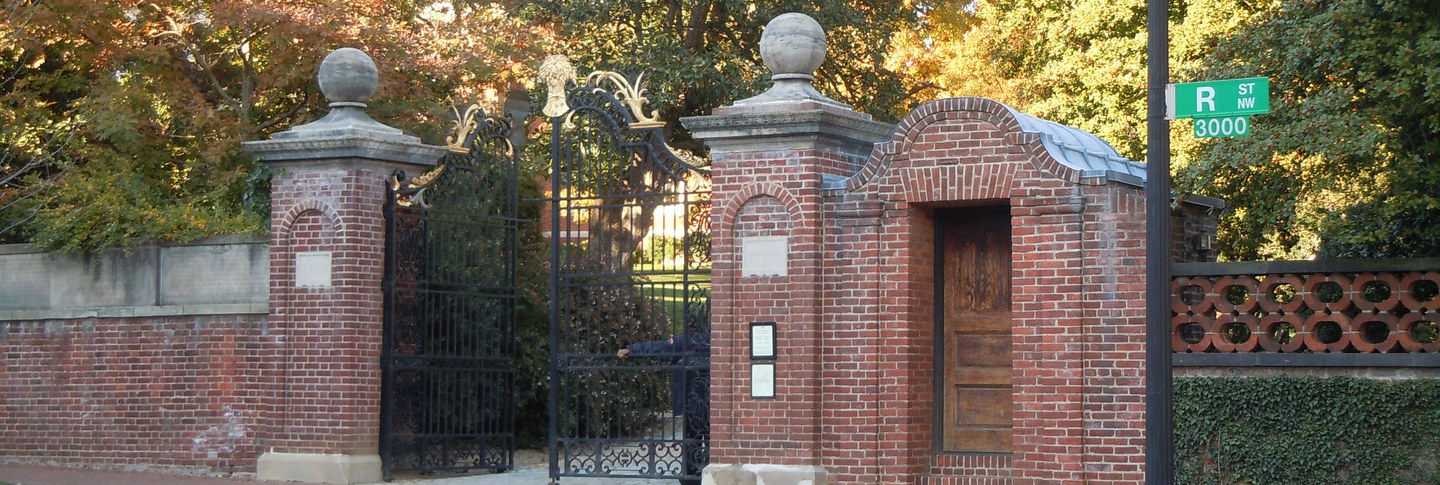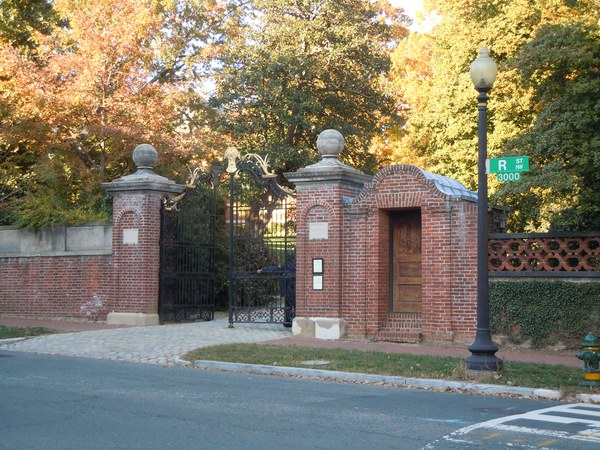Public entrance to the Dumbarton Oaks Gardens.
As ownership of Dumbarton Oaks legally transferred from Mildred and Robert Woods Bliss to Harvard University on November 29, 1940, the fundamental use of the property underwent a dramatic change, as it shifted from a private residence to a nonprofit institution devoted to research and the advancement of knowledge. As a nonprofit institution, Dumbarton Oaks became entitled to certain privileges and exemptions. Initially, Washington, D.C., officials only granted tax exemption to that portion of the property open to the public and upon which the library stood. Accordingly, Harvard had to pay $15,709 per annum on the property then valued at $513,957.90, a figure equal to $8.7 million in 2014.

Arguing that the grounds provided ample educational value to students of horticulture, botany, and architecture, Harvard filed a petition requesting tax exemption for the entire property. Although the trustees paid the initial $15,709 tax under protest—they were firmly committed to appealing the decision—they hoped that they would be able to eliminate such financial strain in the future. Exempt from taxes, Dumbarton Oaks would be able to allocate more funds to achieving the mission of the institution, especially the awarding of research fellowships.
However, in March 1941, director John Thacher wrote Robert Woods Bliss a cautionary appraisal, outlining several means of increasing the public use and therefore the tax exemption of the property:
You may have seen in the papers that certain of the tax exempt institutions in Washington have been removed from the exempt list—the Phillips falling for example—so I was advised to have the D. O. collection open to the public without cards or telephoning on the three afternoons a week. This we did last week. The attendance doubled and so far every one has been extremely well behaved. I have also been interviewing school teachers in regards to making the grounds more available for study groups for children. Tremendous enthusiasm has resulted, so I hope soon that on a few mornings a week small groups of children with teachers and supervisors will be using the gardens and catalogue house for study and enjoyment. When this gets more advanced, I shall report again.
The tax-exempt status of Dumbarton Oaks was confounded by the fact that Harvard University, a Massachusetts corporation, had no legal standing as a nonprofit organization in the District of Columbia. To remedy this, on June 9, 1941, the Trustees for Harvard University, Inc., a District of Columbia corporation, was established, and the President and Fellows of Harvard College deeded Dumbarton Oaks—the house, gardens, and collection—to the Trustees for Harvard University. Although seven of the eleven trustees were to be members of the Harvard Massachusetts corporation, Dumbarton Oaks would become an independent entity for taxation purposes, although remaining a subsidiary of Harvard. Thus, Dumbarton Oaks was able to obtain the full benefits of D.C. tax exemption.

